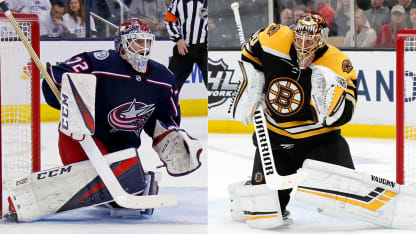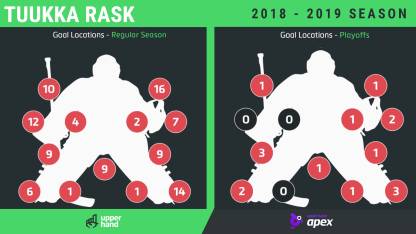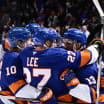Top half of the net: Even with lateral plays and quick shots, it's still important to get shots at least over the leg pads, if not higher, against Bobrovsky, one of the fastest goalies in the NHL. He is rarely out of any play, something Lightning forward Nikita Kucherov, the leading scorer in the NHL in the regular season, discovered after being robbed on a 2-on-0 with center Steven Stamkos 23 seconds into the second period of Game 1. Bobrovsky got his pad across to make the save, and had vertical coverage with his glove over top, preventing Kucherov from making it 4-0 with a goal that could have changed the series. Instead, Bobrovsky made a momentum-changing save.
Less skate on post: Bobrovsky is powerful moving into and off his posts, able to take away the bottom of the net with a skate on each post when play is behind the goal. He gave up six sharp-angled goals among the 100 tracked and has made a conscious effort to reduce exposure from the gap between the bottom of his pad and post when his skate blade is up against it by shifting the skate inside the post so the bottom of the pad seals it. But on quick wraps and lateral plays, the blade often still is the first point of contact, and the small gap remains.
Swivel into post: On rebounds, Bobrovsky moves into his post in one sweeping motion from higher in the crease, using his back leg to swivel into his reverse-VH as he hits the post, which leaves his back pad off the ice and susceptible to quick bank shots from sharp angles.




















